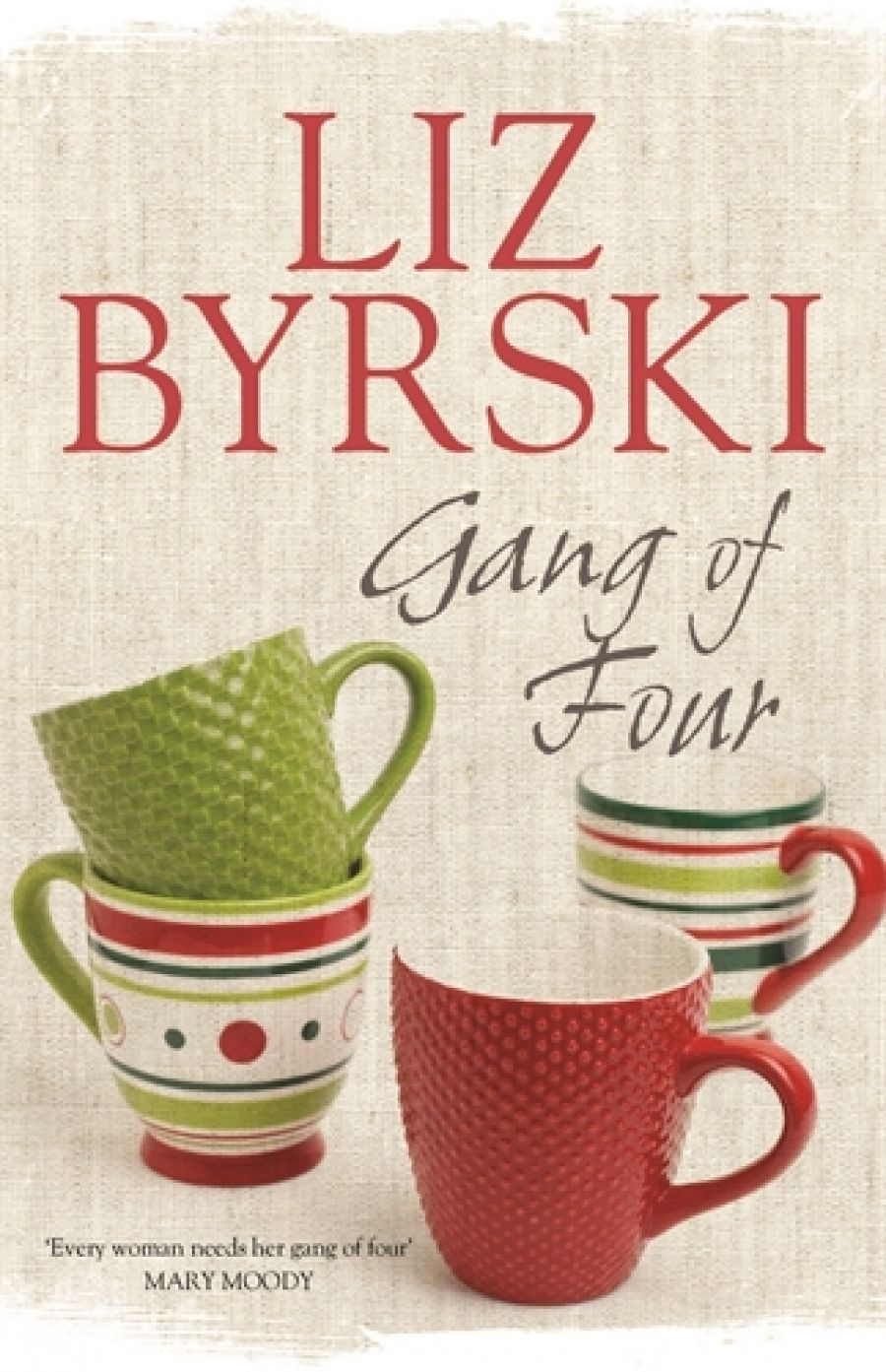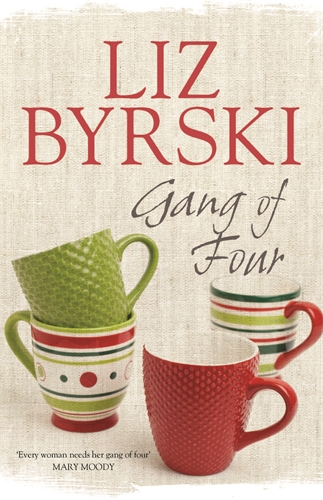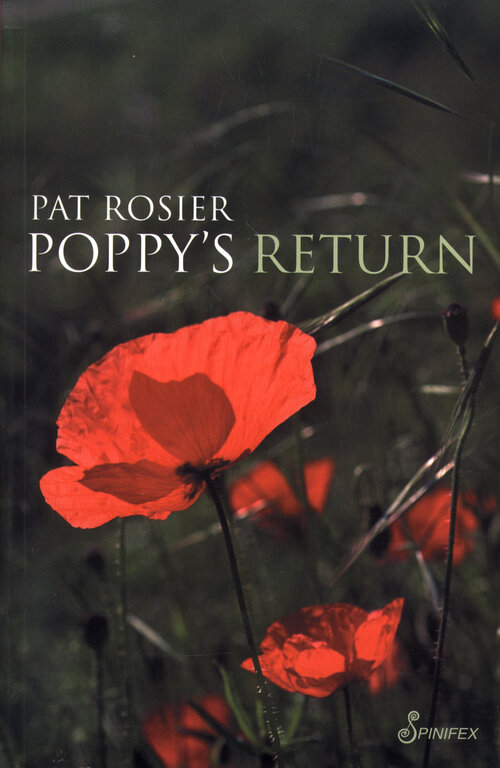
- Free Article: No
- Contents Category: Fiction
- Custom Article Title: Return of the Repressed
- Review Article: Yes
- Article Title: Return of the Repressed
- Online Only: No
- Custom Highlight Text:
Zeitgeist or coincidence? Spinifex and Macmillan have both just published novels with middle-aged women centre stage. In marketing terms, they have launched a niche product, targeting the middle-aged female consumer. Poppy’s Return, by New Zealand author Pat Rosier, and West Australian Liz Byrski’s Gang of Four boldly foreground women’s midlife issues. Their protagonists bravely confront the multiple challenges of their own ageing, in addition to the care of elderly relatives.
- Book 1 Title: Gang of Four
- Book 1 Biblio: Macmillan, $30 pb, 399 pp
- Book 1 Cover Small (400 x 600):

- Book 1 Cover (800 x 1200):

- Book 2 Title: Poppy's Return
- Book 2 Biblio: Spinifex, $27.95 pb, 206 pp
- Book 2 Cover Small (400 x 600):

- Book 2 Cover (800 x 1200):

In the recent television miniseries Angels in America, older star performers Al Pacino and Meryl Streep stole the show. Like Streep’s character, those in Rosier’s and Byrski’s novels embark on journeys of inner discovery. Relationships are revisited and revised, old hurts, frustrations and secrets resolved, dead ends and disappointments worked through.
Rosier’s character, Poppy, is a Wellington-based school-teacher, fulfilled in her work and social life among middle-class lesbian friends and supportive multicultural family (divorced mother and Chinese sister-in-law, nephews and niece). Conflict, repression, stigma, even bad vibes have been airbrushed out of this idealised social network. After years of mourning the death of her partner Kate, she is on the cusp of a new relationship with Jane, an English scientist met on holiday. When her scientist father, George, is diagnosed with terminal cancer, she flies to Yorkshire to nurse him. And, as the blurb coyly insinuates, ‘in Yorkshire there is also Jane’. After long dormancy, Poppy’s romantic and sexual reawakening coincides, and sometimes clashes with, another deeply emotional rite of passage, the loss of a parent from a terminal illness.
The most compelling part of this novel involves Poppy’s response to her father’s rapid decline, and her complex feelings towards his sharp-tongued arthritic wife, who is too debilitated by chronic pain to respond adequately to the physical and emotional demands of George’s illness. There are parallels here with the set-piece cancer death of one of the characters in Byrski’s Gang of Four.
The core themes and values of Poppy’s Return – emotional vulnerability and the search for closure after a parent’s or partner’s death; the adventure of sexual reawakening after prolonged lockdown; the pleasures and perils of middle-aged flirtation and romance; the bedrock security offered by family and friendship – all merit exploration. But, aside from the depiction of Poppy’s relationship to her father, the narrative often seems hackneyed and pedestrian. In their blend of the coy and the explicit, the romantic scenes are just plain embarrassing.
In view of the author’s distinguished career as a journalist, feminist editor and poet, her lacklustre fictional prose is disappointing. I wondered whether the one-dimensional characterisation and stylistic flatness were unconscious derivatives of television sitcoms. Some chapters read like scenarios awaiting for performance to animate them.
Gang of Four is a more ambitious and textured canvas. Featuring four characters, the multi-stranded narrative necessitates more invention, scene setting and artful editing. In a chain reaction to Isabel’s midlife crisis, she and three friends from Perth all decide to have extended time out from their domestic and professional routines. Soon after embarking on her quest to retrace her mother’s career as a ballet dancer in Europe, Isabel has to shed her excess baggage, as, in turn, does each character. However painful the journey, you know that at the end of the yellow brick road lies liberation. Crisis is the threshold to discovery. It is never too late to unblock thwarted creative energies, reinvent yourself, and undo defeat or failure. This therapeutic dynamic is fuelled by the feel-good simplicities of pop psychology.
After years as a ‘lady in waiting’, workaholic lawyer Robyn breaks off her secret relationship to an indecisive married lover, and envisages a liberating sea change. Grace, a high-powered administrator, is a control freak, and secret binge shopper. By letting go, she finds new friendships, adventure and access to long repressed musical and artistic talents. Artist Sally finally realises that her unsatisfactory relationships with men are connected to unresolved guilt for giving up her illegitimate child for adoption. Her long delayed search for her daughter results in pain and anger, which finally yield to wiser acceptance and (self-)forgiveness.
Structured like a soapie, with an international cast of characters and an unashamedly Gothic plot powered by flashbacks and coincidences, Gang of Four is more of a page-turner than Poppy’s Return. Both novels are marred by wooden characterisation and dialogue, and by awkwardness with the mechanics of getting characters from A to B. But in addition to atmospheric travel descriptions, Gang of Four also features prose that rises pleasurably to the challenge of analysis and observation, such as: ‘They slithered cautiously across the black ice of preamble and pleasantries ... The old intimacy taunted them with its inaccessibility.’
The fact that both novels are at their most arresting and most credible when they are expressing suffering, anger or pessimism hints at an underlying instability of genre. How do mordant gender politics, in the vein of cartoonist Kathy Horacek, accommodate cheesy romance with a strong dark stranger? The disparate ingredients of didactic feminism, pop psychology, realism and romance never gelled for me.
Perhaps one should simply view these novels as cultural products, like high-rating television shows. Formulaic elements are the default mechanisms of commercial success and broad market appeal. Poppy’s Return and Gang of Four are agreeable sentimental fictions targeted at a neglected niche market of middle-aged female readers.


Comments powered by CComment